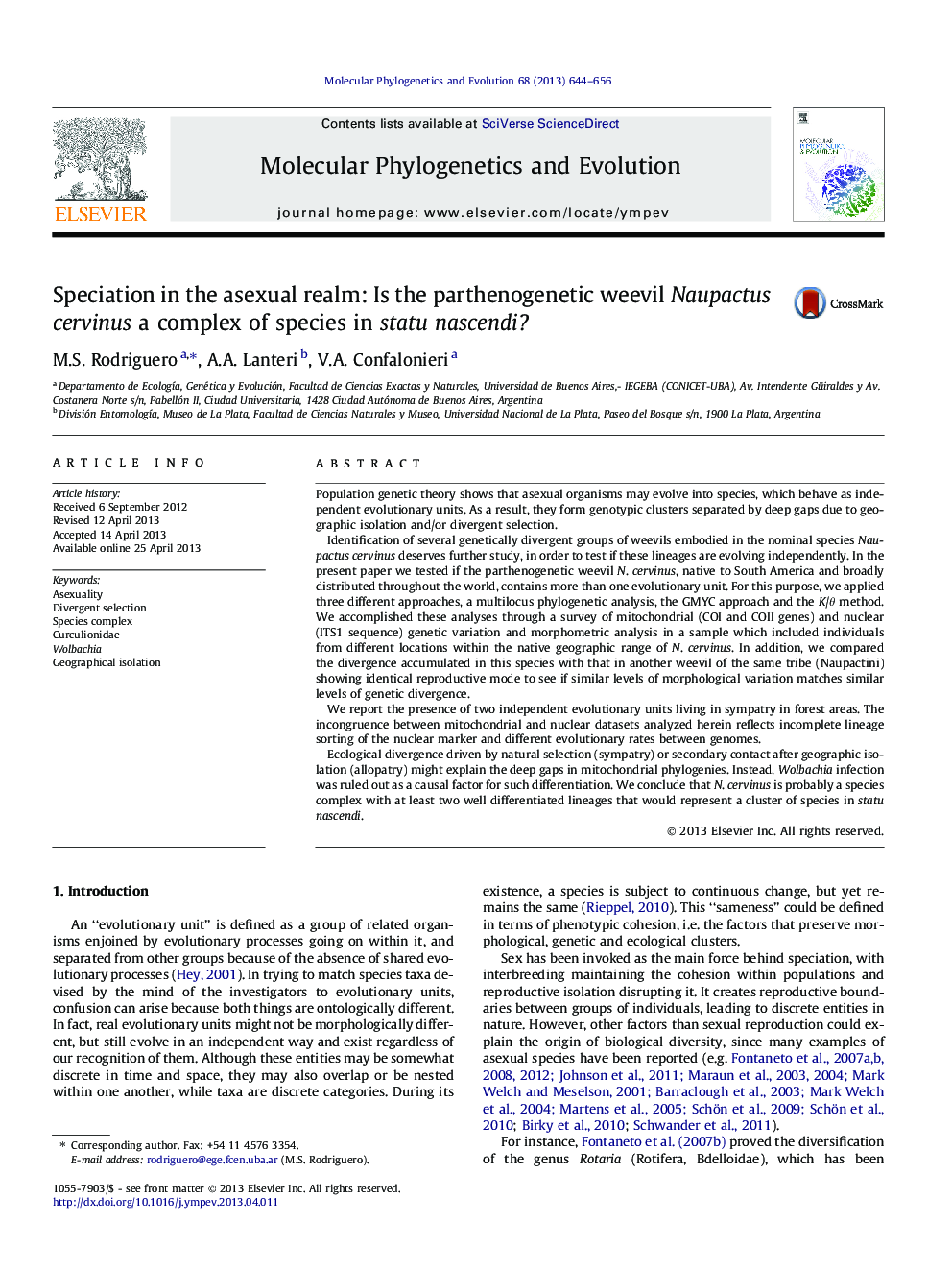| کد مقاله | کد نشریه | سال انتشار | مقاله انگلیسی | نسخه تمام متن |
|---|---|---|---|---|
| 5919807 | 1164272 | 2013 | 13 صفحه PDF | دانلود رایگان |

- Asexual speciation is controversial, but new methodologies can delimit species when sex is absent.
- The parthenogenetic weevil Naupactus cervinus, may contain more than one evolutionary unit.
- Coalescent-based approaches were applied to mitochondrial and nuclear genetic variation.
- Ecological divergence driven by natural selection or geographic isolation are possible explanations.
- Naupactus cervinus is probably a cluster of species in statu nascendi.
Population genetic theory shows that asexual organisms may evolve into species, which behave as independent evolutionary units. As a result, they form genotypic clusters separated by deep gaps due to geographic isolation and/or divergent selection.Identification of several genetically divergent groups of weevils embodied in the nominal species Naupactus cervinus deserves further study, in order to test if these lineages are evolving independently. In the present paper we tested if the parthenogenetic weevil N. cervinus, native to South America and broadly distributed throughout the world, contains more than one evolutionary unit. For this purpose, we applied three different approaches, a multilocus phylogenetic analysis, the GMYC approach and the K/θ method. We accomplished these analyses through a survey of mitochondrial (COI and COII genes) and nuclear (ITS1 sequence) genetic variation and morphometric analysis in a sample which included individuals from different locations within the native geographic range of N. cervinus. In addition, we compared the divergence accumulated in this species with that in another weevil of the same tribe (Naupactini) showing identical reproductive mode to see if similar levels of morphological variation matches similar levels of genetic divergence.We report the presence of two independent evolutionary units living in sympatry in forest areas. The incongruence between mitochondrial and nuclear datasets analyzed herein reflects incomplete lineage sorting of the nuclear marker and different evolutionary rates between genomes.Ecological divergence driven by natural selection (sympatry) or secondary contact after geographic isolation (allopatry) might explain the deep gaps in mitochondrial phylogenies. Instead, Wolbachia infection was ruled out as a causal factor for such differentiation. We conclude that N. cervinus is probably a species complex with at least two well differentiated lineages that would represent a cluster of species in statu nascendi.
Journal: Molecular Phylogenetics and Evolution - Volume 68, Issue 3, September 2013, Pages 644-656